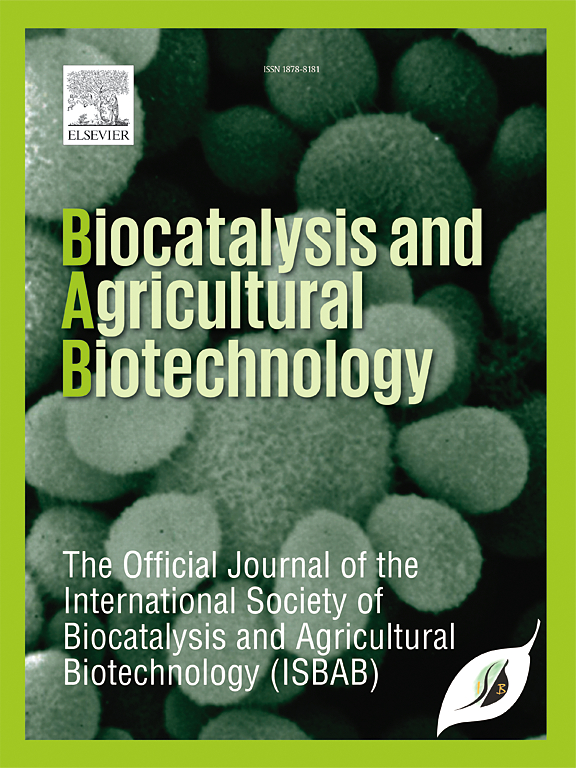Proteases from marine endophyte, Bacillus subtilis ULB16: Unlocking the industrial potential of a marine-derived enzyme source
IF 3.4
Q2 BIOTECHNOLOGY & APPLIED MICROBIOLOGY
引用次数: 0
Abstract
A potential protease producer, exhibiting 98% genetic similarity to Bacillus subtilis LXB3, was isolated from a marine macroalga, Ulva lactuca, and is extensively studied for its potential to produce proteases. This research delved into the exoenzyme profile of the isolate, with a particular emphasis on its significantly higher protease activity when compared to a reference strain, Bacillus subtilis 168. Ammonium sulfate precipitation of the spent culture media revealed that the 60–80% fraction (active protease fraction) exhibited the highest protease content and activity. Mass spectrometric characterization identified multiple alkaline proteases within this sample. The protease fraction displayed optimal activity at 50 °C and pH 10, with notable enhancements in the presence of divalent cations such as Mg2⁺ and Ca2⁺. Significant kinetic parameters of the active fraction with casein substrate suggest its potential to be explored for its different industrial applications. The specific inhibition of protease activity by phenylmethylsulfonyl fluoride indicated a predominance of serine proteases in the active protease fraction. Beyond protease activity, the consortium of proteins also revealed significant biosurfactant properties. This dual functionality underscores the isolate's potential for biofilm inhibition and effective removal of persistent stains, such as blood, in textile applications and also its eligibility to be used in oil spill bioremediation. The current study highlights the newly identified marine endophytic bacterium, Bacillus subtilis ULB16, as a potent and versatile source of industrial enzymes, demonstrating notable protease activity.

求助全文
约1分钟内获得全文
求助全文
来源期刊

Biocatalysis and agricultural biotechnology
Agricultural and Biological Sciences-Agronomy and Crop Science
CiteScore
7.70
自引率
2.50%
发文量
308
审稿时长
48 days
期刊介绍:
Biocatalysis and Agricultural Biotechnology is the official journal of the International Society of Biocatalysis and Agricultural Biotechnology (ISBAB). The journal publishes high quality articles especially in the science and technology of biocatalysis, bioprocesses, agricultural biotechnology, biomedical biotechnology, and, if appropriate, from other related areas of biotechnology. The journal will publish peer-reviewed basic and applied research papers, authoritative reviews, and feature articles. The scope of the journal encompasses the research, industrial, and commercial aspects of biotechnology, including the areas of: biocatalysis; bioprocesses; food and agriculture; genetic engineering; molecular biology; healthcare and pharmaceuticals; biofuels; genomics; nanotechnology; environment and biodiversity; and bioremediation.
 求助内容:
求助内容: 应助结果提醒方式:
应助结果提醒方式:


